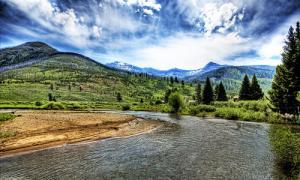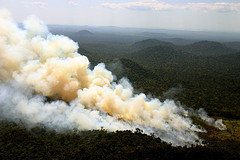Environmental Quality in a Steady State Economy
The most important characteristic of a steady state economy is sustainable scale, meaning that the economy fits within the carrying capacity of the ecosystems that contain it. An economy of sustainable scale, therefore, has more room for nature. Without a continuously growing economy to crowd out more and more nature, citizens can focus on stewardship of natural resources and the services they provide — services that are critical to life on Earth. In a steady state economy, people enjoy more opportunities for outdoor recreation, wildlife populations are more abundant, and healthy ecosystems provide vital services such as regulation of climate, production of food, and purification of water.
 | More of this…Intact landscapes that provide critical Image credit: StuckInCustoms |
Economic Growth Undermining Environmental Conditions
As an economy grows, it impinges upon natural ecosystems. These ecosystems tend to be resilient — they can rebound from quite a bit of disturbance. But as economic growth puts greater and greater strains on ecosystems, their resilience fades. An overgrown economy causes environmental degradation. Examples include habitat loss, climate disruption, species extinctions, pollution, and topsoil removal. Finding better ways to manage economic activities can alleviate deteriorating environmental conditions, but if growth remains the primary goal for the economy, that alleviation is temporary. People in a continuously growing economy can expect less resilient ecosystems, less wildlife, increasing competition for dwindling natural resources, and disruption of key services that are provided by healthy, functioning ecosystems.
 | Less of that…Unsustainable use of natural resources Image credit: Leoffreitas |
Exemplary Conservation
How much conservation of natural resources and ecosystems is enough? That’s a tricky question, but the answer lies in (1) conserving big enough chunks of land and water to make sure that we still receive adequate ecosystem services, and (2) conserving representative chunks of the variety of ecosystems out there. It’s only a planning process at this point, so the actual conservation network is by no means complete, but the Nature Conservancy maps out conservation goals around the world on an ecoregion by ecoregion basis. They call this effort “Conservation by Design.“